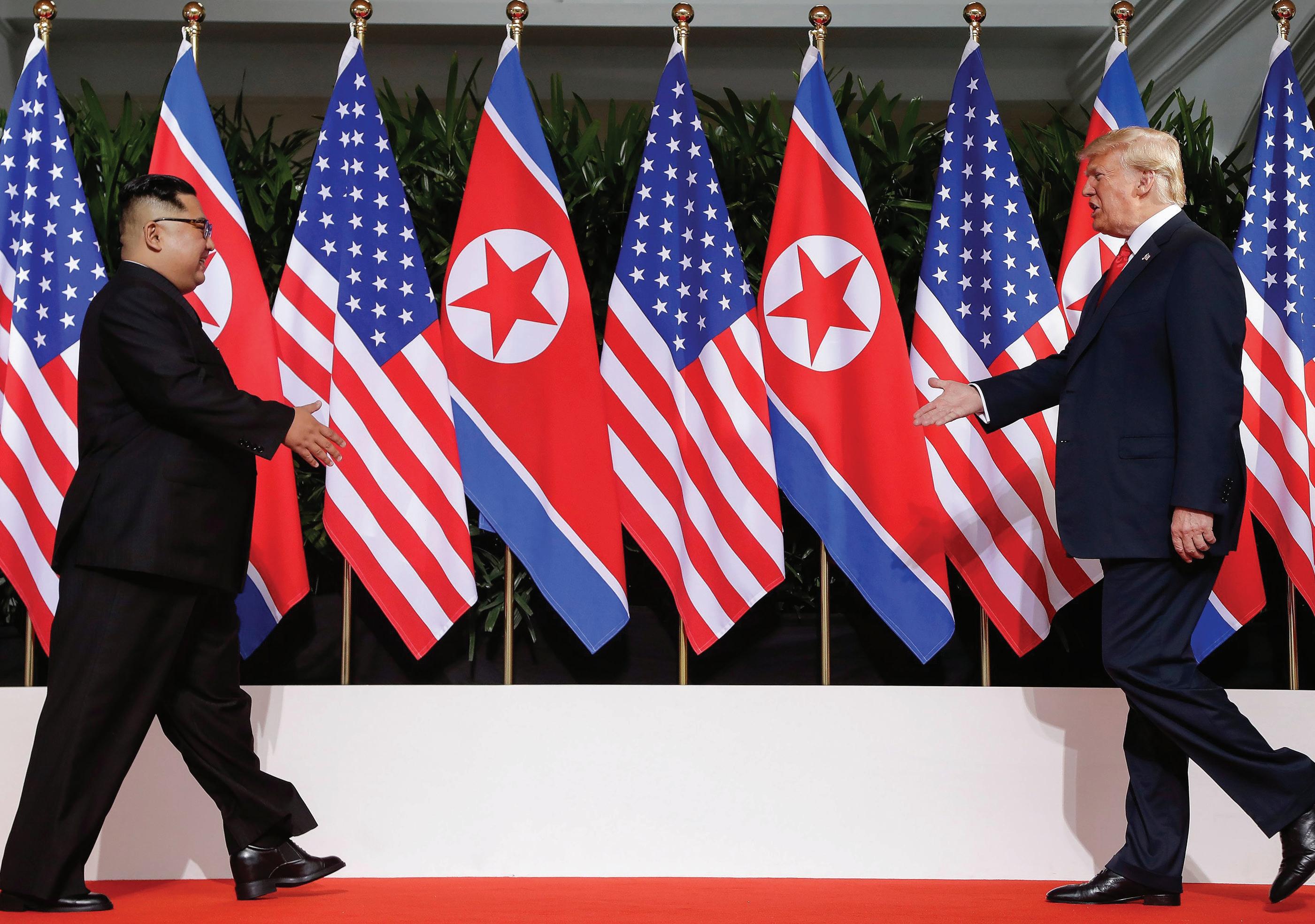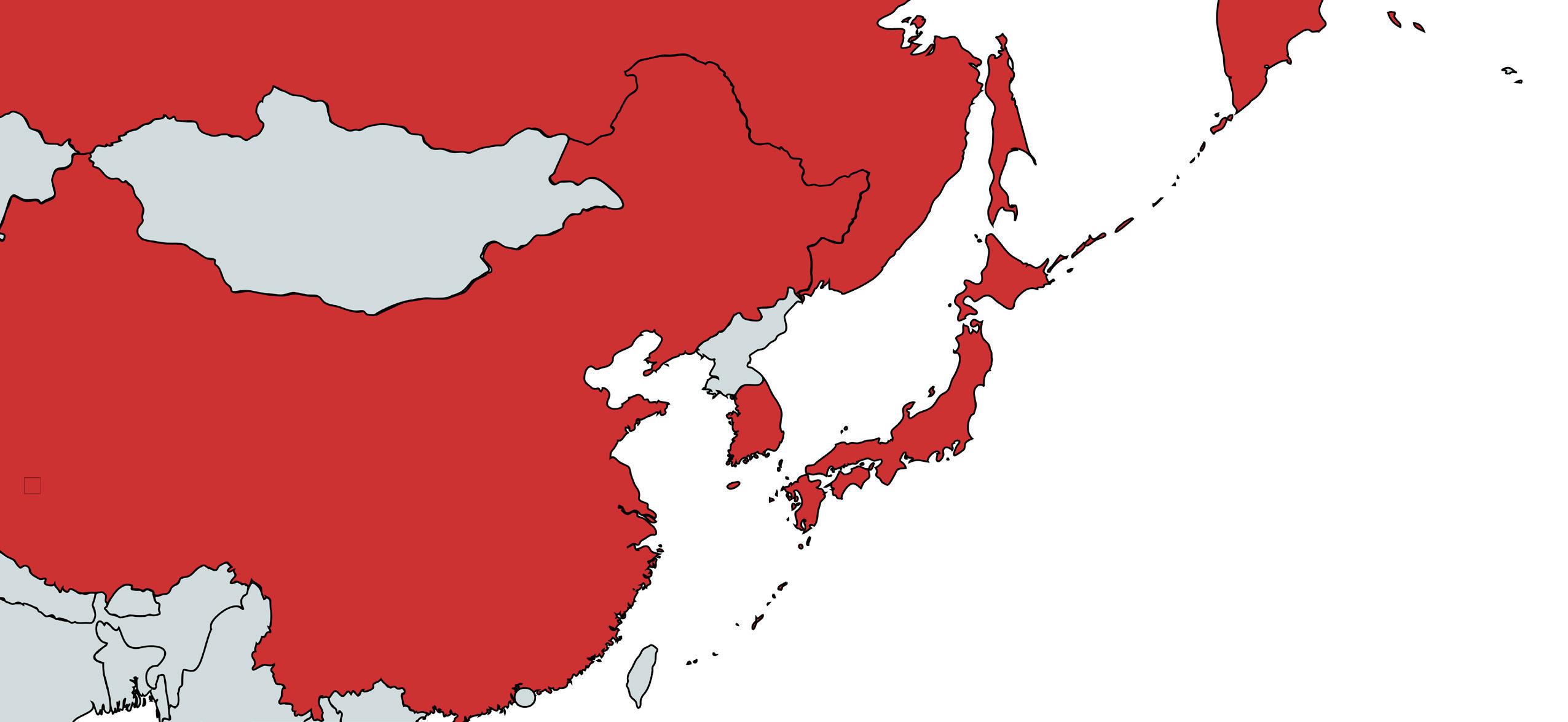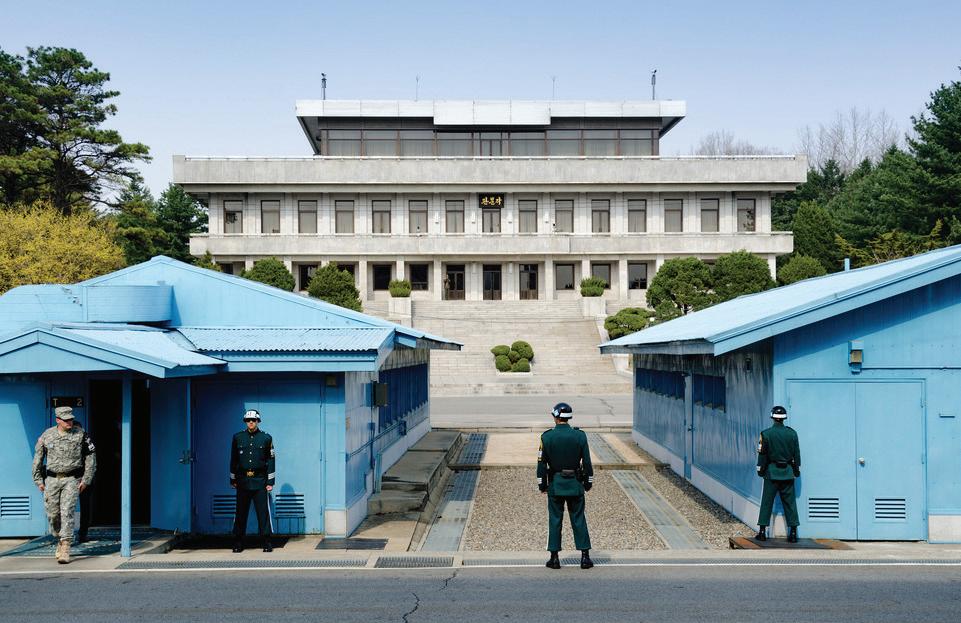
8 minute read
Introduction
After nearly 70 years of hostility, U.S.-North Korea relations are at a crossroads. Tensions rose throughout 2017 as North Korea tested missiles and advanced its nuclear program at a rapid pace and President Donald Trump and Chairman Kim Jong Un traded barbs and threats. Yet in early 2018, a series of diplomatic overtures orchestrated by South Korean President Moon Jae In led to North Korea’s participation in the PyeongChang Olympics, sustained inter-Korean dialogue, and President Trump’s agreeing to meet with Kim.
The historic U.S.-North Korea summit took place in Singapore on June 12, 2018 and produced a joint statement in which “President Trump committed to provide security guarantees to the DPRK, and Chairman Kim Jong Un reaffirmed his firm and unwavering commitment to complete denuclearization of the Korean Peninsula.”1 The Singapore summit decreased tensions and provided both governments with a mandate to work toward denuclearization and a new bilateral relationship. Since the summit, North Korea has maintained a voluntary moratorium on missile and nuclear testing;2 inter-Korean engagement has proceeded at a steady pace; and North Korea has returned the remains of some American soldiers.3 However, as of December 2018, negotiations appear to have slowed due to disagreements about the sequencing and pace of denuclearization.
Advertisement
This state of affairs is all too familiar for the U.S.-North Korea relationship. Since the 1990s, the United States and other members of the international community have sought to negotiate an end to North Korea’s nuclear program. Mutual distrust; failure—or perceived failure—to uphold commitments; and ongoing hostility have undermined both nuclear negotiations and implementation of agreements. If the United States and North Korea are to negotiate successfully, the two sides must break free from this decades-old pattern of behavior.
1 The White House. (2018, June 12). Joint Statement of President Donald J. Trump of the United States of America and Chairman Kim Jong Un of the Democratic People’s Republic of Korea at the Singapore Summit. Retrieved from https:// www.whitehouse.gov/briefings-statements/joint-statement-president-donald-j-trump-united-states-america-chairman-kim-jong-un-democratic-peoples-republic-korea-singapore-summit 2 DPRK Ministry of Foreign Affairs. (2018, September 9). Building a Peace Regime on the Korean Peninsula – An Urgent Demand of the Times. Retrieved from http://www.mfa.gov.kp/en/building-a-peace-regime-on-the-korean-peninsulaan-urgent-demand-of-the-times-kim-yong-guk-director-general-of-the-institute-for-disarmament-and-peace-ministry-of-foreign-affairs-democrat 3 The White House. (2018, July 26). Statement from the Press Secretary on the Repatriation of Remains from North Korea. Retrieved from https://www.whitehouse.gov/briefings-statements/statement-press-secretary-repatriation-remains-north-korea
HEADER
SINGAPORE SUMMIT COMMITMENTS
1. The United States and the DPRK commit to establish new U.S.–DPRK relations in accordance with the desire of the peoples of the two countries for peace and prosperity. 2. The United States and the DPRK will join their efforts to build a lasting and stable peace regime on the Korean Peninsula. 3. Reaffirming the April 27, 2018 Panmunjom Declaration, the DPRK commits to work toward complete denuclearization of the Korean Peninsula. 4. The United States and the DPRK commit to recovering POW/MIA remains, including the immediate repatriation of those already identified.
Caption: President Trump and Kim Jong Un shake hands at the Singapore Summit. Image Credit: The Evening Standard
An historic opportunity?
Fortunately, several factors contribute to an environment that is potentially favorable to negotiations.
First, the presidents of both South Korea and the United States support negotiating with North Korea. While South Korea and the United States may disagree about tactics, having the two allies on the same strategic page removes a major potential source of friction in negotiations. South Korean President Moon Jae In’s campaign platform included a promise to revive a pro-engagement strategy toward North Korea, which draws upon tenets of the turn-of-the-century Sunshine Policy of his progressive predecessor Kim Dae Jung. Since assuming office in mid-2017, Moon has made inter-Korean rapprochement efforts and parallel U.S.-North Korea negotiations a centerpiece of his presidency and has dedicated significant political capital and resources to facilitating both.4 Likewise, President Trump, the first sitting U.S. president to meet with a North Korean leader, represents a break from the past. Since the Singapore summit, President Trump has reiterated his belief that negotiations are the correct strategic approach to the North Korean challenge.
Second, the ascent of Kim Jong Un could mark a new North Korean approach to relations with the United States and the international community. In 2013, Kim chose to abandon his father’s “military-first” policy in favor of byungjin, a dual-track approach of economic growth and development of a nuclear program. In April 2018, Kim revised his policy further, stating that, having achieved its nuclear goals, North Korea would henceforth focus solely on economic growth.5 At both the inter-Korean summit in April 2018 and the U.S.-North Korea summit in June 2018, Kim claimed that North Korea was willing to work toward the denuclearization of the Korean peninsula.6 While some experts question the sincerity of Kim’s stated willingness to denuclearize, his apparent desire to normalize North Korea’s diplomatic and economic status, combined with rising expectations for economic growth within the North Korean population, may have created incentives for North Korea to negotiate.
On the other hand, longstanding obstacles to successful nuclear negotiations remain. These constraints include delicate intraregional dynamics and historic tension between China, Japan, and South Korea. Internal pressures, particularly in Japan, South Korea, and the
4 Pardo, R. P. (2018, March 14). Moon on a Mission: South Korea’s New Approach to the North. The Diplomat. Retrieved from https://thediplomat.com/2018/03/moon-on-a-mission-south-koreas-new-approach-to-the-north 5 Choe, S. (2018, April 20). ‘We No Longer Need’ Nuclear or Missile Tests, North Korean Leader Says. The New York Times. Retrieved from https://www.nytimes.com/2018/04/20/world/asia/kim-jong-un-hotline-korea.html?module=inline 6 ROK Ministry of Foreign Affairs. (2018, April 27). Panmunjom Declaration for Peace, Prosperity and Unification of the Korean Peninsula. Retrieved from http://www.mofa.go.kr/eng/brd/m_5476/view.do?seq=319607&srchFr=&srchTo=&srchWord=&srchTp=&multi_itm_seq=0&itm_seq_1=0&itm_seq_2=0&company_cd=&company_ nm=&page=1&titleNm=
United States, limit leaders’ ability to engage with North Korea independently of domestic politics and public opinion.
Disagreements about the technical elements of the denuclearization process also remain unresolved. North Korea is reluctant to declare the number and locations of its nuclear facilities or to provide an inventory of its fissile material and nuclear warheads, while the United States insists on a declaration early in the process. The logistics and sequencing of denuclearization, including which actors will be involved in each step of the process and when each step will take place, are all unsettled. Varying levels of concern about North Korea’s human rights record and disagreements among the international community regarding the pace of sanctions relief also have the potential to cause problems in the negotiations.
Each of these factors has the capacity to stall or derail negotiations. Delays would give Kim the opportunity to further grow and develop his nuclear stockpile. Increases in North Korea’s nuclear capabilities would likely lead in turn to rising regional tensions and, in the worstcase scenario, war. In other words, failure to overcome the current impasse could make ever more remote the possibility of an agreement that would denuclearize North Korea and fundamentally transform the security environment in Northeast Asia.
The scope and objectives of this report
Given a potentially historic opportunity but myriad obstacles, how should the United States move ahead? This report identifies a path forward that is within the current U.S. strategy of negotiating with North Korea; would put North Korea on a path toward denuclearization by the end of 2019; and is in the United States’ interest regardless of North Korea’s true intentions.
A great deal of ink has been spilled questioning whether bilateral negotiations are prudent at this point. However, for the time being, President Trump appears committed to negotiating with North Korea. As such, the recommendations in this report aim to advance this process and increase the chances that negotiations lead to substantive denuclearization.
This report’s recommendations also identify potential steps that the United States could take within a limited time horizon (that is, before the end of 2019). The window of opportunity described above is real, but it is rapidly closing. Within the United States, skeptics of the negotiations contend that North Korea has not yet taken any meaningful steps toward denuclearization and demand that the next Trump-Kim summit, tentatively scheduled for early 2019, yield more concrete results than the Singapore summit. Public support for a diplomatic approach to North Korea is high in the United States, but it could
wane should substantial denuclearization steps not be forthcoming.7 In addition, the 2020 presidential election will likely divert attention away from a number of issues, including negotiations with North Korea.
Further afield, China and South Korea are eager to begin easing sanctions on North Korea, which would undermine the U.S.-led maximum pressure campaign that many credit with bringing North Korea to the negotiating table. In addition, an economic downturn in South Korea may dampen public enthusiasm for President Moon’s engagement policy.8
Given these constraints, this report provides a roadmap for negotiations over the next year, with the objective of putting North Korea on a path toward denuclearization before the window of opportunity closes. This approach aims to both capitalize on the current political momentum, as well as to lay a foundation for future negotiations that will necessarily be longer and more complex.
Finally, this report identifies steps that are in the United States’ interest regardless of the Kim regime’s willingness to denuclearize. As discussed below, North Korea’s true intentions are unknown. As a result, this report’s recommendations are not predicated on any particular North Korean strategy. Rather, they allow the United States to guard its own interests while continuing to negotiate in good faith. Should North Korea be willing to denuclearize, then the process, as recommended below, will build confidence and lay the foundation for a sustainable, long-term denuclearization process. Should North Korea be unwilling to denuclearize, then the recommendations of this report will allow the United States to preserve its options and reverse course should the need arise. In addition, the recommendations are structured to provide the United States with the opportunity to probe the regime’s true intentions.
7 Swanson, E., & Lucey, C. (2018, June 21). Most Americans Approve of How Trump Handled North Korea, New Poll Finds. Public Broadcasting Service. Retrieved from https://www.pbs.org/newshour/world/most-americans-approve-of-how-trump-handled-north-korea-according-to-new-poll 8 Ramstad, E. (2018, January 25). South Korea’s Stalling Job Market and Moon’s Economic Push. CSIS. Retrieved from https://www.csis.org/analysis/south-koreas-stalling-job-market-and-moons-economic-push
The remainder of this report proceeds as follows:
• What does North Korea want? A discussion of the various interpretations of
North Korea’s motivations and strategy • Regional dynamics: A brief overview of the interests and current policies of the main regional actors • Recommendations: Four concrete recommendations for the United States that can put U.S.-North Korea nuclear negotiations on the right track






